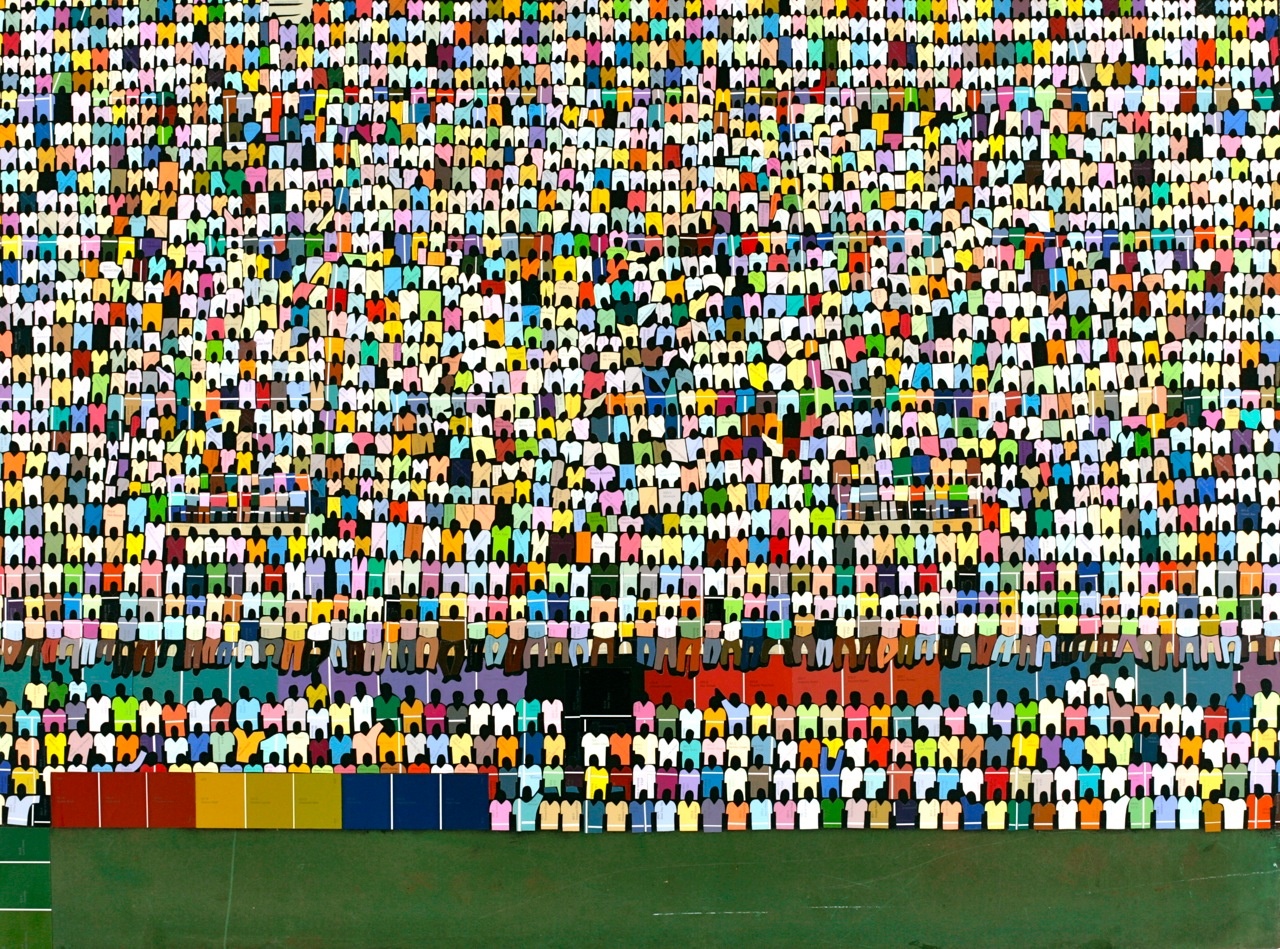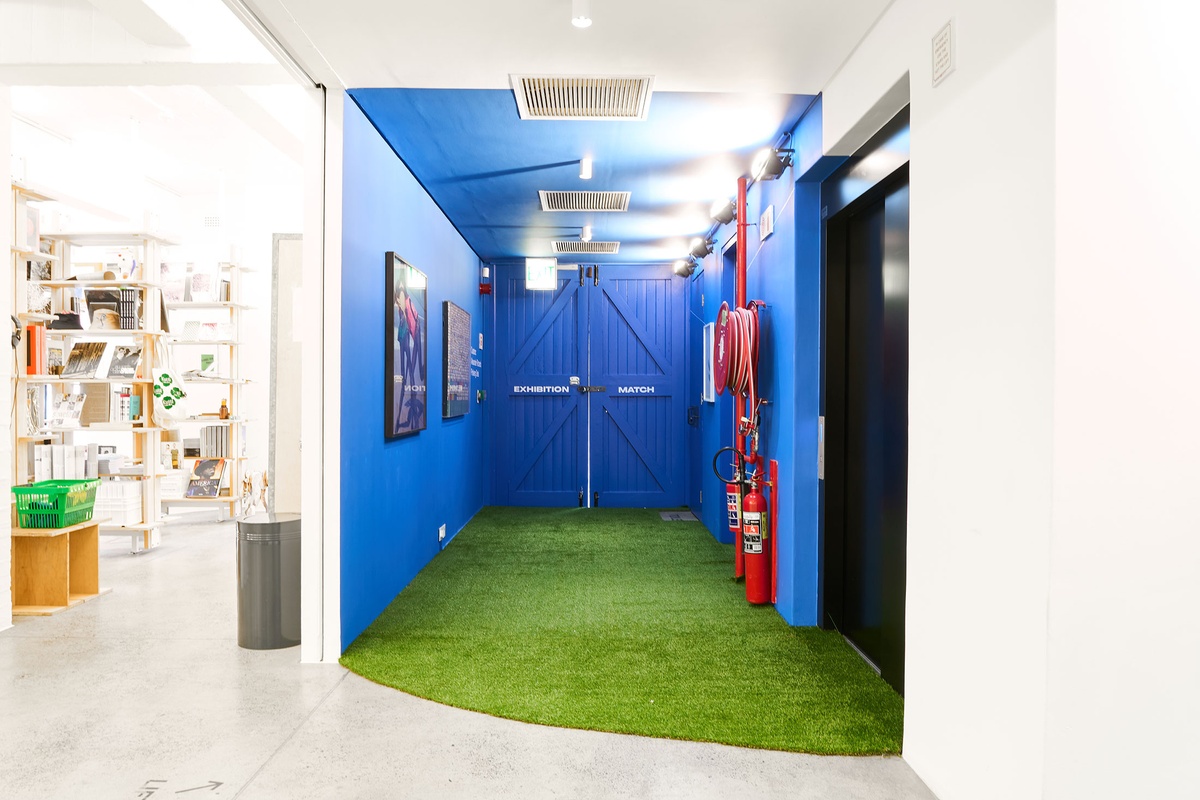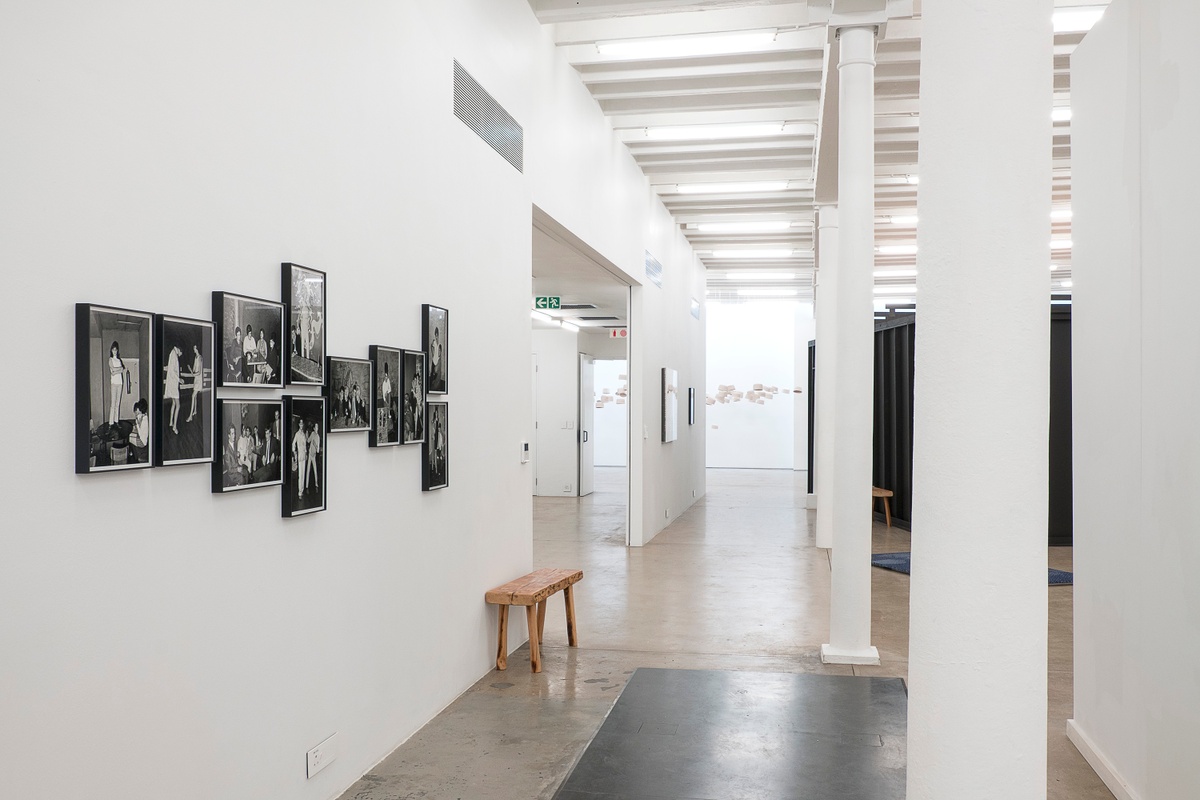Dan Halter

Reminiscent of the curios sold at South African traffic lights, Study with Colour (Dulux Range) is an unusual offering from an artist recognised for his high-polish finishes and cool conceptualism. With little of Halter’s studied smoothness, there is to this work an endearing spontaneity – a wonderful inexactness – appearing as craft rather than concept. The figures in the crowd are described by only their shirts and trousers, all hand-cut from Dulux paint-sample cards.
Study with Colour (Dulux Range) was first shown at A4 in You & I, an exhibition in the Gallery curated by Ziphozenkosi Dayile & Kemang Wa Lehulere (September 13, 2017–January 28, 2018), and later in Exhibition Match '22 (February 16–February 28, 2022), curated by Tshepo Setai and Alexander Richards. Of this work, in the context of football as a curatorial frame, they wrote:
In Study With Color (Dulux range), Halter creates a mock-up scene of a full stadium using discarded Dulux paint-sample cards pasted onto an old blackboard. Evoking the collective solidarity of a Mexican wave, the work speaks to the unity found in a crowd of supporters.
b.1977, Harare; works in Cape Town
In works darkly wry and poignant, Dan Halter considers the political and economic dissolution of his native Zimbabwe. The country serves as the fulcrum around which all Halter’s thematic concerns gather, the conceptual and geographic point from which he considers Africa’s colonial histories, new national identities, and the continued displacement of people. In the most modest of objects, Halter finds a metonym for the migrant experience; matches, banknotes, discarded clothes. The ubiquitous Zimbabwe bag is of recurring significance in his work, a cheap red-white-blue tote that has become synonymous with Africa’s border crossings. Trading new bags for those of foreign nationals and refugees, the artist accumulates these objects of passage – “these worn-out membranes,” the artist writes, which “carry the record of travel in their grimy patina.” Halter, too, trades new words for old phrases. Zimbabwean proverbs, the Communist Manifesto, a short story by Jorge Luis Borges; he works at found language as he works at found objects, studying its worn-out sayings, its historical grime. With these borrowed signifiers – these bags and phrases – Halter distils the intractable political present into image and word.




